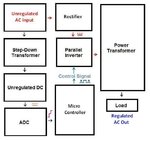jean12
Advanced Member level 2
Hello there,I am designing a dc-ac converter and I want at a high load to maintain the output voltage 220VAC,for that I want to use Hall effect sennsor for sensing the current so interface this to a PIC,can anyone give further ideas for better development?
Thanks.
Thanks.
